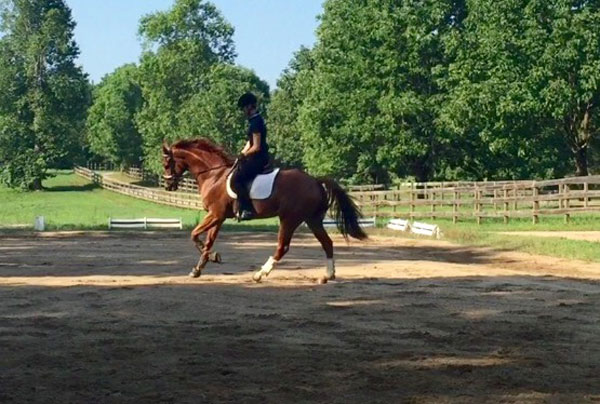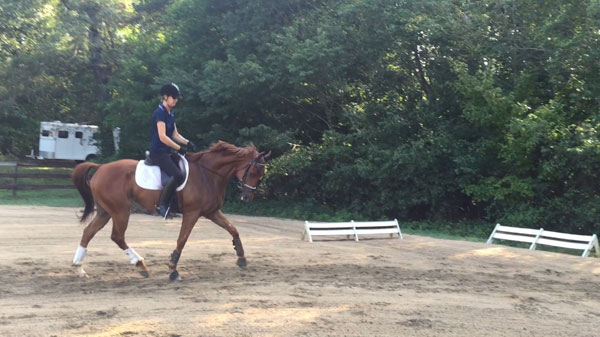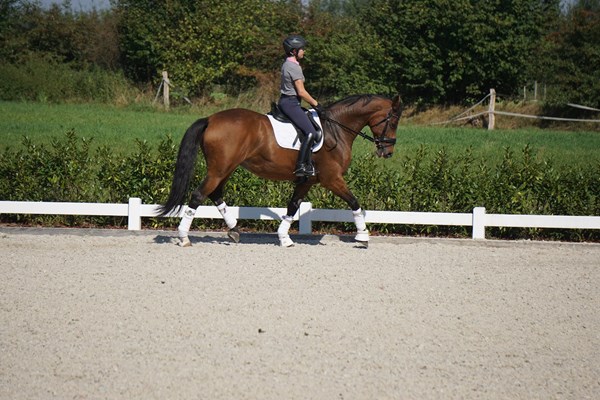Pretty much any trainer will tell you that riding countless transitions is THE secret to helping improve impulsion, strength and balance. And for Forrest, an ex-race horse whose biggest challenge is adapting to a completely different balance beneath his rider (as this rider doesn’t hike her stirrups up to her armpits and lean over his neck), it’s particularly true. But I think what perhaps isn’t addressed enough when this advice is given is, “But the transitions must be ridden correctly!” Or, at least, as correctly as you can. Look, I’m a no-name trainer who has never ridden on a Team, and believe me, I make mistakes in my riding like everybody else, but I strive to correct them as quickly as I can so it doesn’t happen again and this is imperative when it comes to riding transitions. Why? Because nothing teaches a horse to perform crappy transitions more than riding crappy transitions. Like everything else in dressage, prerequisites are everything. If your horse is crooked, don’t ride a transition. If he’s not on the bit, don’t ride a transition. If you’re struggling to answer your phone while trotting around, for God’s sake, don’t ride a transition. Wait until you have your horse going ‘calm, forward and straight’ — what all the great masters have advised.
On Forrest, that means we begin with a nice, stretchy trot and ride a few bendy lines to test for rhythm and swing and an absence of tension.
Because he is so young and green, I want to keep these transitions playful for him, so I focus on trot-canter-trot. My goal is to improve the quality of each gait by the end of the session and I personally think that, on a very green bean, asking for those really crisp ‘walk-trot-walk’ transitions can irritate a youngster (‘Sheesh! You just told me to trot, why are you pulling me back down to walk again?’) and create confusion. So on this ride, after a short walk break, we track his easiest way first, to the left, in trot, and pick up the left canter in the corner.


From there, we leave the rail and canter across the diagonal, coming back to trot just before the end and then pick up the right canter, essentially riding an enormous figure 8. I can add a circle up at the top and come back to trot or just swing back across the diagonal if I want.
As we continue to ride more trot-canter-trots, I begin offering a mixed bag of directions so that Forrest doesn’t begin to anticipate what’s coming up and remains focused and listening. I ask for transitions now on a short diagonal here, or on half a circle there, with a bit of lengthening down a long side in canter and a burst of trot lengthening through a short side and what becomes apparent is that he is becoming rounder and more active with his engine firing on all cylinders.

He’s so with me (and when you consider a neighbor is logging trees on his property and the crash and grinding of that is enormous) it’s a freakin’ miracle: It feels effortless to send him forward or bring him back. I’m so proud of Forrest’s effort today: a big, gold, star!














